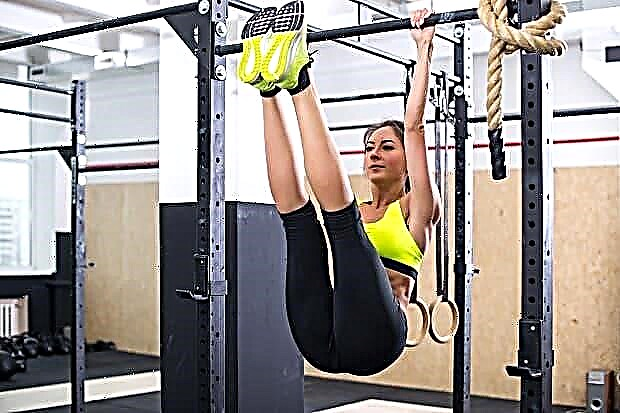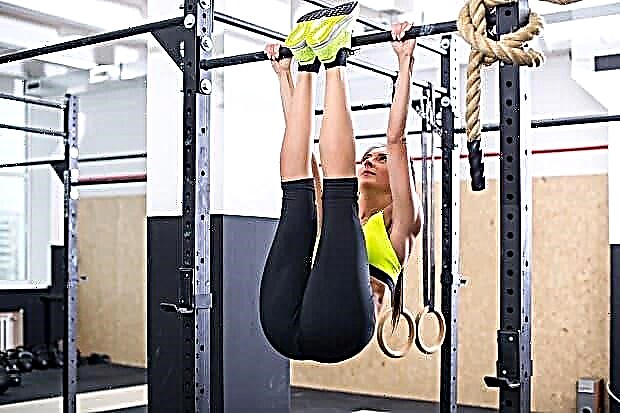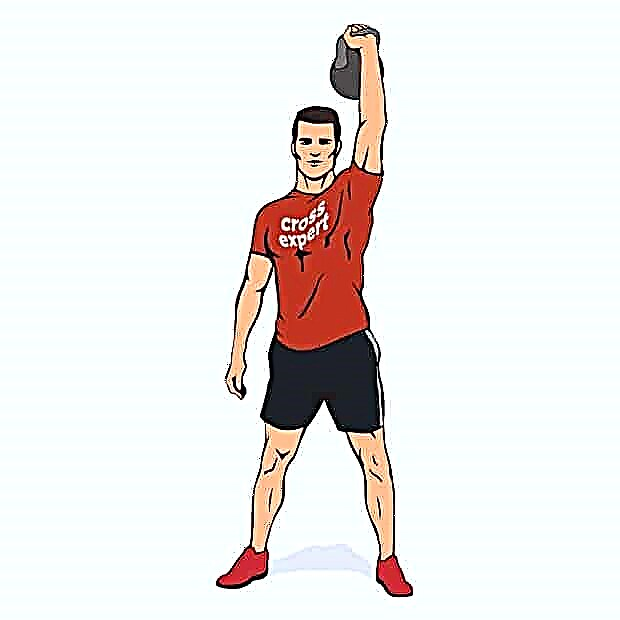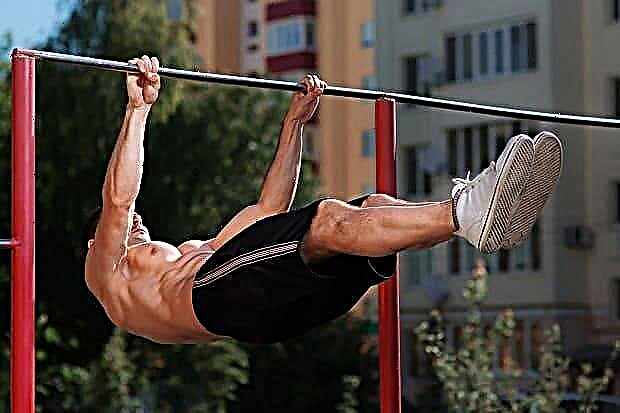Hanging leg raises on the bar (Toes to Bar) is one of the most effective abdominal exercises, due to the fact that when it is performed, the body is in a stretched position, so our muscles receive a tremendous load even in the negative phase of the movement (when lowering the legs) ...
There are several varieties of this exercise: lifting straight legs in the hang, lifting legs bent at the knees, alternating leg lifts, lifting socks to the bar and "corner" (static holding of a right angle between the legs and the body). We will tell you more about all of them below.
Also in our today's article we will analyze the following aspects:
- What is the use of this exercise;
- Types of hanging leg raises on the horizontal bar and also the technique of performing the exercise;
- Crossfit complexes containing this exercise.
What is the use of hanging leg raises?
When lifting the legs in the hang, the athlete works out the abdominal muscles with an emphasis on their lower part - that segment, the development of which is often not enough even for experienced athletes. Add one each upper ab and one oblique leg raises to the hanging leg raises and you have a great, full workout.

© Makatserchyk - stock.adobe.com
By focusing on the lower abdominal muscles in each workout, you can kill several birds with one stone, making your core muscles stronger and improving the drawing of the "cubes". With the "cubes" everything is clear - here the only visual component is important to us, but a strong press is a completely different story. Well-developed abdominal muscles help us perform exercises such as deadlifts and barbell squats by improving coordination and more control over the position of the pelvis and lower back; improve our performance in exercises where we use our explosive power (sprint, box jumping, bench squats, etc.); and also significantly increase the overall strength potential of the body - it becomes much easier for us to adapt to a huge volume of training load.
Types and technique of performing exercises
Next, we will talk about all types of leg lifts to the bar and the correct exercise techniques:
Raising straight legs in the hang on the crossbar
The most common and perhaps the most effective variation of this exercise. The technique is as follows:
- The lifter hangs from the bar at a level slightly wider than the shoulders, keeping the arms and legs straight. In the spine, we preserve the natural lordosis, the gaze is directed forward. We take a deep breath.
- We exhale sharply and begin to pull our legs up, making a slight movement with the pelvis forward. We try to keep our legs straight and keep them in the same position throughout the entire approach. Feet can be pressed against each other or just keep them at a short distance - as you like.

© undrey - stock.adobe.com
- Raise your legs to a level just above the waist, trying to catch the maximum contraction of the rectus abdominis muscle. You can linger for a second at the point of peak contraction in order to additionally statically strain the muscle group we need. Smoothly we begin to lower our legs down, taking a breath.

© undrey - stock.adobe.com
Hanging leg bent at the knee
This option is more suitable for beginner athletes who are not yet given the opportunity to lift straight legs in the hang.
Its fundamental difference is that working at the same amplitude with a shorter lever, we perform less effort and can perform more repetitions. At the same time, it is important not to lose the neuromuscular connection, many beginners try to reach with their knees almost to the chin, and this is fundamentally wrong. The movement must be done to the level at which the load on our muscles will be maximum, it makes no sense to rise higher.

Alternate hanging leg raises
An interesting option for those who want to add something new to their training process. It differs significantly from the previous types of leg lifts in that we combine static and dynamic loads in it: lifting one leg up to a right angle, part of our press performs dynamic work, while the other part of the press does static work, being responsible for the stable position of the body , otherwise the athlete will turn slightly to the side.
In this position, it is important to monitor the position of the lower back; you do not need to pull the sacrum area forward too much, since the spine will "twist" a little when lifting one leg.

Raising socks to the bar
This exercise differs from regular leg raises in that here we work in the longest possible amplitude and load the entire array of abdominal muscles.
Trying to touch the horizontal bar with your toes, try to minimize inertia and not raise the pelvis too high - this way you will create an unwanted load on the lumbar spine and will include the extensors of the spine and buttocks in the work. Our task is to work out the abdominal press as isolated as possible, keeping the body motionless.

© milanmarkovic78 - stock.adobe.com
"Corner" (static holding of a right angle)
It's no secret that the combination of static and dynamic loading is the key to continuous progress. Performing the corner exercise, you force the muscles of your abdomen to work in a completely different mode, contracting them in an isometric manner.

© undrey - stock.adobe.com
Our task here is to raise straight legs to the level of parallel with the floor and stay in this position for as long as possible, keeping the legs motionless. At the same time, it is important not to forget about breathing, it should be smooth, without delays.
Many athletes who have well-developed quadriceps often complain that, along with the press, the front of the thigh does some of the work. To "turn off" the quadriceps from work, you need to bend your knees slightly (about 10-15 degrees). This may change the biomechanics of movement slightly, so try raising your legs a little higher to feel the peak contraction of the abdominal muscles.
Crossfit complexes
The table below shows several functional complexes containing this exercise. Be careful: the load is clearly not designed for beginners, be prepared for the next day that the soreness in the abdominal muscles will be such that it will hurt you even to laugh.
| FGS | Perform 10 kettlebell thrusters, 10 burpees, 10 two-handed kettlebell swings, and 10 hanging leg raises. 4 rounds in total. |
| Hercules | Perform 25 front squats, 50 hang raises, 40 rope jumps, 50 barbell burpees, and 30 hang raises. There are 3 rounds in total. |
| Less-More-Less | Do 10 barbell thrusters, 20 pull-ups, 30 box jumps, 40 wall throws, 50 hang raises and repeat this series of exercises again, starting from the end. |











